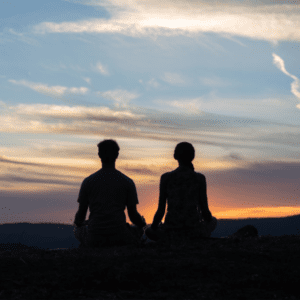The Highest Technique of Concentration
This is a foundation-level guide to learning Paramhansa Yogananda’s Hong-Sau Technique of Meditation.
Paramhansa Yogananda is considered one of the most influential yogis of modern times.
Along with the basics, you’ll learn a breathing exercise to practise before Meditation. The exercise will help you achieve effective results from the beginning.
Whether you want to develop concentration at important projects or simply want to experience peace within, you’ll find this guide helpful.
Let’s begin!
Table of Contents
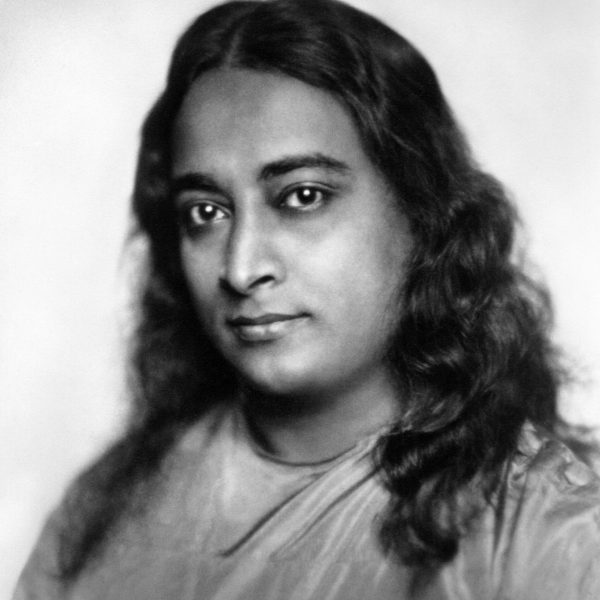
Paramhansa Yogananda (1893 - 1952)
Paramhansa Yogananda born as Mukunda Lal Ghosh in Gorakhpur, India. He was a self-realized yogi.
Yogananda introduced Meditation and Kriya Yoga to millions of people across India and America.
His Guru Swami Sri Yukteswar sent him to the West in 1920s on a special mission.
His mission was to show unity between Eastern and Western religions. The balance between Western materialism and Eastern Spiritualism. He was concerned for the upliftment of all mankind.
In the mid-1940s he published his book Autobiography of a Yogi, which has introduced millions to the wonders of yoga.
Harper SanFrancisco listed it as one of the “100 best spiritual books of the 20th Century.”
Paramhansa Yogananda defined meditation as “deep concentration on God or one of His aspects.”
You’ll learn about the “aspects of God” toward the end of this post.
What is meditation
Meditation is a state of intense awareness achieved by stilling and concentrating the thoughts.
In fact, self-observation is a good definition of meditation.
Science discovers truths about nature, while meditation allows us to learn truths about our own nature.

Benefits of Meditation
- It is one of the best possible antidotes to the excessive stress of modern life. As we relax, the heart beats more slowly and the blood pressure lowers.
- It helps retrain response mechanisms so we don’t react as strongly or as negatively to adverse situations. It gives us the ability to be more centered, to be more in control of ourselves.
- Meditation has been found to strengthen the immune system, which helps ward off diseases before they affect us and lets us recover more quickly when we do become ill.
- It helps create a healthy mind, one that is alert, positive, and calm. This, in turn, produces a body filled with vitality and health.
- Helps foster a healthy mind. It allows us to release negative mental states such as fear, worry, and anger and replace them with positive attitudes.
“In the Bhagavad Gita, Krishna counsels action without desire for the fruits of action. Meditation, too, should be approached in this spirit”
Paramhansa Yogananda Tweet
Yogic Principles
One of yoga’s great gifts to mankind is the discovery of the link that exists between energy, breath, and mind.
As you change one, you also change the other two. If you excite one, the other two become excited and, conversely, if you calm one, the other two respond by becoming calm also.
You will notice that if your mind becomes excited, from a sudden fright perhaps, your breath will also speed up. You might also notice that your muscles fill with energy in preparation for action.
Observe yourself going through changes in this mind/breath/energy cycle the next time you see a film which plays on your emotions.
The breath is the most outward and, therefore, the easiest of these three linked elements to control.
Control your breath and see how quickly it influences your thoughts. This is true in any situation, not just in meditation.
A student of these teachings who was in charge of training for the San Francisco Police Department told his rookies that if they wanted to take control of a potentially dangerous confrontation, they had to learn to control themselves first. In order to help them achieve self-control, he taught them to monitor their breathing, to take slow deep breaths.
They found it amazingly effective. Try it yourself the next time you are in a tense situation.
Control of the breath and breathing is central to yoga practice.
In this post, you’ll learn a very effective breathing exercise to help you become relaxed and calm for meditation.
Meditation Technique Preparation
- Introduction
- Breathing Exercise
- Posture
- Beginning Meditation
Introduction
In this section, you’ll learn the Hong-Sau technique, which Paramhansa Yogananda called “the highest technique of concentration.”
The Hong-Sau technique is scientific in its approach, working with fundamental forces of human physiology.
Wisdom Window: In Sanskrit the words of this mantra, universal to all creatures, are Aham saha,
or, reduced to mantric words of power, Hong–Sau: “I am He.”
Yogis say that on a subtle level this is the very sound made by the breath: Hong with inhalation; Sau with exhalation.
We have already discussed briefly under Yogic Principles how breath, energy, and mind are linked, but now it is time to consider it in greater depth.
This technique is relatively simple but extremely important for meditation.
Deep meditation comes spontaneously when our whole being is internalized and focused at the point between the eyebrows (the spiritual eye, or Christ center). This is the seat of concentration, and Hong-Sau works with breath, attention, and mantra to focalize all life-force at this center.
The sounds used in this technique, Hong (rhymes with “song”) and Sau (sounds like “saw”), are a mantra.
A mantra is a sound formula which has a certain power.
In some cases the mantra produces healing or strength or devotion. The special effect of Hong-Sau, however, is to calm and internalize our prana.
Breathing Exercise

Focusing the mind is especially important when it comes to meditation—in fact, meditation doesn’t begin until we are concentrated.
Here is a breathing technique which works to help focus your mind.
This is a simple but very effective technique to help you become relaxed and calm for meditation.
The technique will help you relax the body. It works as a preparation for meditation but it can be used any time. It takes only a few minutes.
Inhale slowly, counting to eight. Hold the breath for the same eight count while concentrating your attention at the point between the eyebrows. Now exhale slowly to the same count of eight. This is one round of “regular breathing.”
Depending upon your capacity, you can go more slowly, counting mentally to 12 (inhale to count of 12, hold for 12, exhale to count of 12) or use 16 count.
It is essential, however, that the inhalation, holding, and exhalation be of equal length.
Generally speaking, slower is better, but don’t go so slowly that you get out of breath. That would be counterproductive.
As you do this technique, feel that you are becoming increasingly relaxed and focused.
This technique will regularize and harmonize the breath, which, in turn, will produce the same result for your mind.
Posture
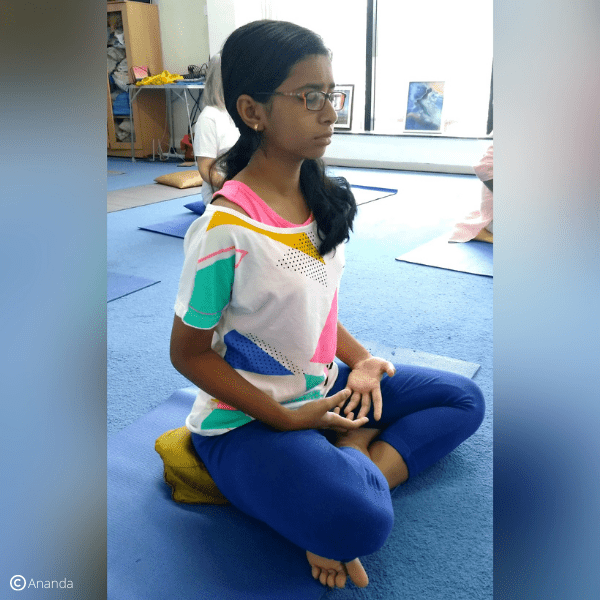
There are many ways of sitting for meditation that are equally good.
You can sit either in a straight-backed chair or on the floor in any of several poses.
Two things, however, are essential: Your spine must be straight, and you must be able to relax completely.
A straight spine is important for complete relaxation. If you slump, skeletal muscles must tense to help support your weight
Keep the chest up—you might try feeling that there is a line attached to the chest pulling it upward and forward at a 45 degree angle.
The chin should be kept level with the floor.
Be sure that whatever pose you use is comfortable. It is much more important to keep your mind focused rather than on the pain in your knees.
Beginning Meditation
Focus your attention at the point between the eyebrows. This area, called “the spiritual eye,” is a center of great spiritual energy.

Your eyes should be closed and held steady, and looking slightly upwards, as if looking at a point about an arm’s-length away and level with the top of your head.
Simply observe your thoughts. Release any thoughts that arise into the vastness of space. Let go of the past and future.
Begin by inhaling and then exhaling completely. As the next breath comes in, mentally chant Hong. Then, as you exhale, mentally chant Sau. Make no attempt to control the breath, just let its flow be completely natural.
You should feel that the breath itself is silently making the sounds of Hong and Sau.
In the first phase of the technique, feel the breath at the point where it enters the nostrils. Be as attentive as possible.
If you have difficulty feeling the breath, you can concentrate, for a while, on the breathing process itself, feeling your chest expanding and -contracting.
Gradually, as you become more calm, try to feel the breath higher and higher in the nose.
Be sure that your gaze is kept steady at the point between the eyebrows throughout your meditation. Don’t allow your eyes to follow the movement of the breath.
Continue to relax and concentrate more deeply until you can feel the breath high in the nasal cavity.
You can then feel that it is awakening and energizing the Christ center at the point between the eyebrows.
If you find that your mind has wandered, simply bring it back to an awareness of the breath and the mantra.
At no time during the practice of this technique should you make any effort whatsoever to control the breath. Let it flow naturally.
Gradually, you may notice that the pauses between inhalation and exhalation are becoming longer. Enjoy these spaces as a natural result of calmness.
Useful Tip: You can increase your interiorization by feeling that you are becoming the breath itself and that you are expanding into endless space at the spiritual eye.
As you grow very calm you may notice that the breath is becoming so shallow (or the pauses so prolonged) that it hardly seems necessary to breathe at all. Try to increase this feeling and the sense of complete freedom that accompanies it.
In the deepest practice of Hong-Sau, energy becomes so internalized that the body goes into a state of suspended animation and the breath stops altogether. But don’t try to achieve this state through any act of will. Simply accept it gratefully and joyfully if it comes.
The amount of time you practice this technique is entirely up to you. But, general speaking, progress in meditation is determined by a combination of intensity of effort and amount of time spent.
A few minutes of Hong-Sau is unlikely to take you into deep states, although it should help to calm and concentrate your mind.
If you want to achieve greater results you will need to increase both the time you spend doing Hong-Sau and the total time of your meditations.
Paramhansa Yogananda said that if one wants to become a master of yoga in this life he should practice Hong-Sau for at least two hours a day. Yogananda himself, while still a boy, used to practice it for eight hours at a sitting.
But you must judge for yourself how much time you feel you can dedicate to your meditations. Don’t artificially increase the time past your capacity to enjoy. Meditation is meant to bring you satisfaction and joy.
Hong-Sau Technique of Meditation: Video
General Guidelines
When to Meditate
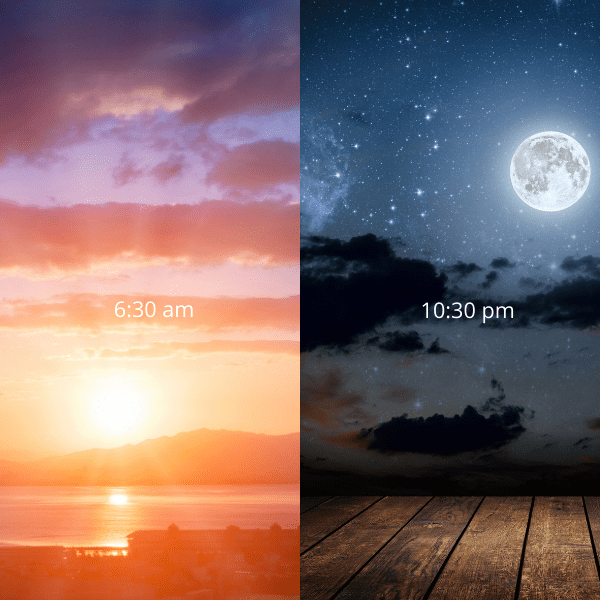
For the vast majority of people the best times to meditate are in the morning just after waking and in the evening before going to bed. But meditation can be done any time and anywhere you can be quiet and inward.
Choose a convenient time for your meditations. Regularity is the most important factor, so find a time when you can be consistent.
It is best to wait at least a half hour after eating—up to three hours after a heavy meal—so there will not be competition for energy between digestion and meditation.
Wisdom Window: Practice this technique with great reverence and attention for at least ten minutes (to begin with). The longer your practice, the better.
You can practice it at any time, day or night, during formal meditation or in your leisure time—for instance, while riding in a car (provided you aren’t driving!), or even while lying on your back in bed. It will give you a deep sense of inner calmness, and will bring you at last to the realization that you are not the body, but the soul—superior to and independent of this material body – Paramhansa Yogananda
Where to Meditate

If possible, set aside an area that is used only for meditation. This will help create a meditative mood and, over time, your special place will become filled with meditation “vibrations.”
A small room or closet is ideal as long as it can be well ventilated. If you don’t have enough space for a whole room, then set aside a small area in your bedroom or some other room that can be reserved for meditation.
Choose a quiet place for your meditation area, a place where you can concentrate without distractions.
Meditation Accessories
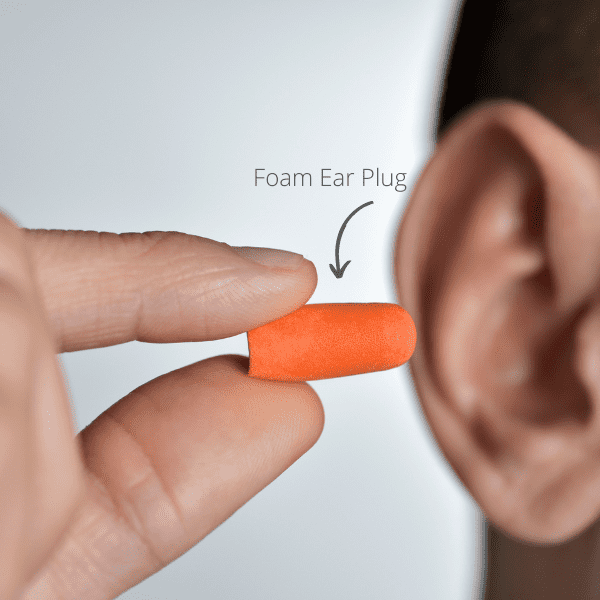
Your meditation area can be kept very simple—all you really need is a chair or small cushion to sit on.
Being able to shut out sounds will help your meditations. You can purchase inexpensive earplugs at any pharmacy or sporting goods store.
Simple rubber earplugs can be very effective, but some people find them uncomfortable for longer meditations. If this is true for you, try foam earplugs. They don’t block sounds quite as well, but they are very comfortable.
You can also use earphones made to reduce industrial noise. These are very effective and often the choice of long-time meditators.
The daily practice of focusing within gradually gives us control over the flow of life-force, letting us turn it inward. As a result, we feel more fulfilled and lose the addiction to constantly seeking satisfaction from things outside ourselves: from possessions, or endless entertainment, or drugs and alcohol.
The simple reversal of the direction of life-force has dramatic results.
Far from becoming bored or life-negating, we regain our ability to find enjoyment in simple pleasures.
Practical Exercise – Do this from today
Plan to meditate every day. Try meditating 15 to 20 minutes twice a day in the beginning.
You can gradually increase the time, but don’t go beyond your capacity to enjoy each meditation. Depth of focus is much more important than merely increasing the amount of time.
As you progress it is natural to want to meditate longer, and the more you meditate, the more you will want to -meditate!
“Don’t feel badly if you find yourself too restless to meditate deeply. Calmness will come in time, if you practice regularly. Just never accept the thought that meditation is not for you. Remember, calmness is your eternal, true nature”
Paramhansa Yogananda Tweet
Routine
It is very important that you establish a daily routine of meditation.
- Sit to meditate.
- Check to see that your posture is correct.
- Relax the body completely.
- Concentrate at the point between the eyebrows.
- Offer a prayer for guidance and success in your meditation.
- Feel a deep sense of peace at the point between the eyebrows; let this peace spread into the brain and then throughout the body.
- Hold onto this peace as you resume your activities, or, if it is an evening meditation, as you drift off to sleep.
Bonus: Deepening your meditation
Attuning to the Qualities/Aspects of God
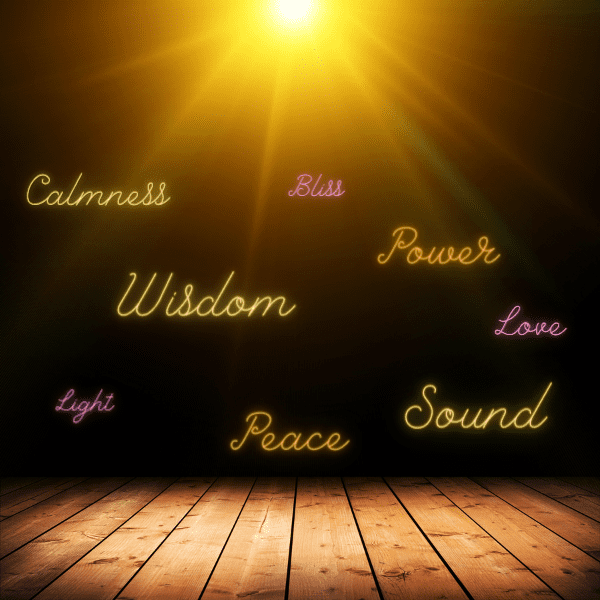
Paramhansa Yogananda defined meditation as “deep concentration on God or one of His aspects.”
Hong-Sau, involves a breathing exercise. Its purpose is to free us from restless thoughts. Its ultimate purpose is to allow us to become completely internalized.
In fact, practiced correctly, it will allow us to achieve 100% concentration. Only then can we experience the deepest states in meditation, and feel our unity with God.
It is said in the Indian Scriptures that God manifests himself as eight basic qualities: light, sound, wisdom, power, calmness, peace, love, and bliss.
In meditation, through superconsciousness, we can attune ourselves to these qualities, any one of which can help us experience great expansion of consciousness.
As you concentrate on God you begin to realize, as all Scriptures teach, that you are made in His image. You are a child of God and His kingdom lies within. His qualities are your qualities. His peace is your peace. His universal love is yours to taste and to offer to all the world. His joy can make life a priceless gift.
Deeper states such as these do not come easily, however. They require dedication and discipline. And yet, even a little meditation has profound rewards.
India’s great Scripture, the Bhagavad Gita, says, “Even a little practice of this inward religion will save one from dire fears and colossal suffering.”
Source – Compiled excerpts from the book “Lessons in Meditation” by Jyotish Novak

